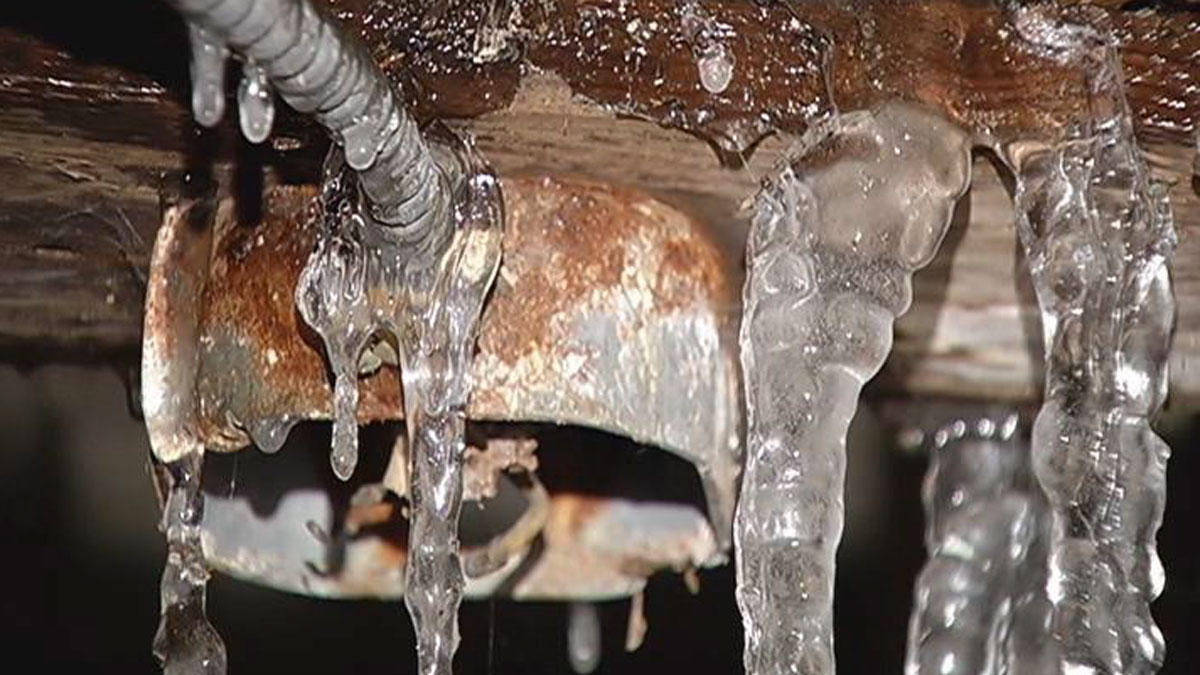Preventing Frozen Plumbing: Best Tips for Winter
Preventing Frozen Plumbing: Best Tips for Winter
Blog Article
We've found this post about Helpful Tips to Prevent Frozen Pipes this Winter directly below on the internet and believe it made perfect sense to relate it with you over here.

Winter can wreak havoc on your plumbing, particularly by freezing pipelines. Here's exactly how to stop it from occurring and what to do if it does.
Intro
As temperatures decline, the danger of icy pipelines rises, possibly leading to expensive repair services and water damages. Recognizing exactly how to prevent frozen pipelines is crucial for home owners in cold environments.
Recognizing Icy Pipes
What causes pipelines to ice up?
Pipes freeze when revealed to temperatures listed below 32 ° F (0 ° C) for expanded periods. As water inside the pipelines ices up, it increases, putting pressure on the pipeline wall surfaces and potentially triggering them to break.
Dangers and problems
Frozen pipes can result in water disturbances, residential property damage, and expensive repair services. Burst pipes can flood homes and cause comprehensive structural damages.
Signs of Frozen Water Lines
Identifying frozen pipes early can stop them from rupturing.
How to identify frozen pipes
Search for lowered water circulation from faucets, unusual smells or sounds from pipes, and visible frost on subjected pipelines.
Prevention Tips
Shielding at risk pipelines
Wrap pipelines in insulation sleeves or utilize warmth tape to shield them from freezing temperatures. Focus on pipes in unheated or external locations of the home.
Home heating methods
Maintain interior areas effectively heated, particularly locations with pipes. Open up cupboard doors to permit warm air to circulate around pipes under sinks.
Protecting Outside Plumbing
Garden tubes and exterior taps
Disconnect and drain pipes yard tubes before winter season. Install frost-proof faucets or cover exterior taps with protected caps.
What to Do If Your Pipes Freeze
Immediate activities to take
If you presume frozen pipelines, keep taps available to eliminate pressure as the ice melts. Utilize a hairdryer or towels taken in warm water to thaw pipelines gradually.
Long-Term Solutions
Architectural modifications
Take into consideration rerouting pipes far from outside wall surfaces or unheated locations. Add extra insulation to attics, cellars, and crawl spaces.
Updating insulation
Buy top quality insulation for pipes, attics, and wall surfaces. Proper insulation helps keep regular temperature levels and minimizes the threat of icy pipes.
Final thought
Protecting against frozen pipelines calls for positive measures and fast reactions. By understanding the causes, indications, and safety nets, homeowners can shield their pipes throughout cold weather.
6 Proven Ways to Prevent Frozen Pipes and Protect Your Home
Disconnect and Drain Garden Hoses
Before winter arrives, start by disconnecting your garden hoses and draining any remaining water. Close the shut-off valves that supply outdoor hose bibs and leave the outdoor faucet open to allow any residual water to drain. For extra protection, consider using faucet covers throughout the colder months. It’s also important to drain water from any sprinkler supply lines following the manufacturer’s directions.
Insulate Exposed Pipes
Insulating your pipes is an effective way to prevent freezing. Pipe insulation is readily available at home improvement stores and is relatively inexpensive. Pay close attention to pipes in unheated areas such as the attic, basement, crawl spaces, or garage. Apply foam insulation generously to create a buffer against the cold. You can also wrap your pipes in heat tape or thermostat-controlled heat cables for added warmth.
Seal Air Leaks
Inspect your home for any cracks or openings that could let in cold air. Seal any holes around the piping in interior or exterior walls, as well as the sill plates where your home rests on its foundation. Additionally, make sure to keep your garage door closed unless you’re entering or exiting. Leaving it open creates a significant air leak that can lead to frozen pipes.
Allow Warm Air Circulation
During cold snaps, it’s essential to allow warm air to circulate evenly throughout your home. Leave interior doors ajar to promote better airflow. Open kitchen and bathroom cabinets to help distribute heat consistently around the rooms. If you have small children or pets, be sure to remove any household chemicals or potentially harmful cleaners from open cabinets for safety.
Let Faucets Drip
A small trickle of water can make a big difference in preventing ice formation inside your pipes. When temperatures drop significantly, start a drip of water from all faucets served by exposed pipes. This continuous flow helps prevent the water from freezing. Additionally, running a few faucets slightly can relieve pressure inside the pipes, reducing the chances of a rupture if the water inside does freeze.
https://choateshvac.com/6-proven-ways-to-prevent-frozen-pipes-and-protect-your-home/

I'm just very fascinated with Helpful Tips to Prevent Frozen Pipes this Winter and I hope you enjoyed our blog posting. Those who enjoyed reading our blog post plz remember to pass it around. Many thanks for your time. Return soon.
Schedule Appointment Now Report this page